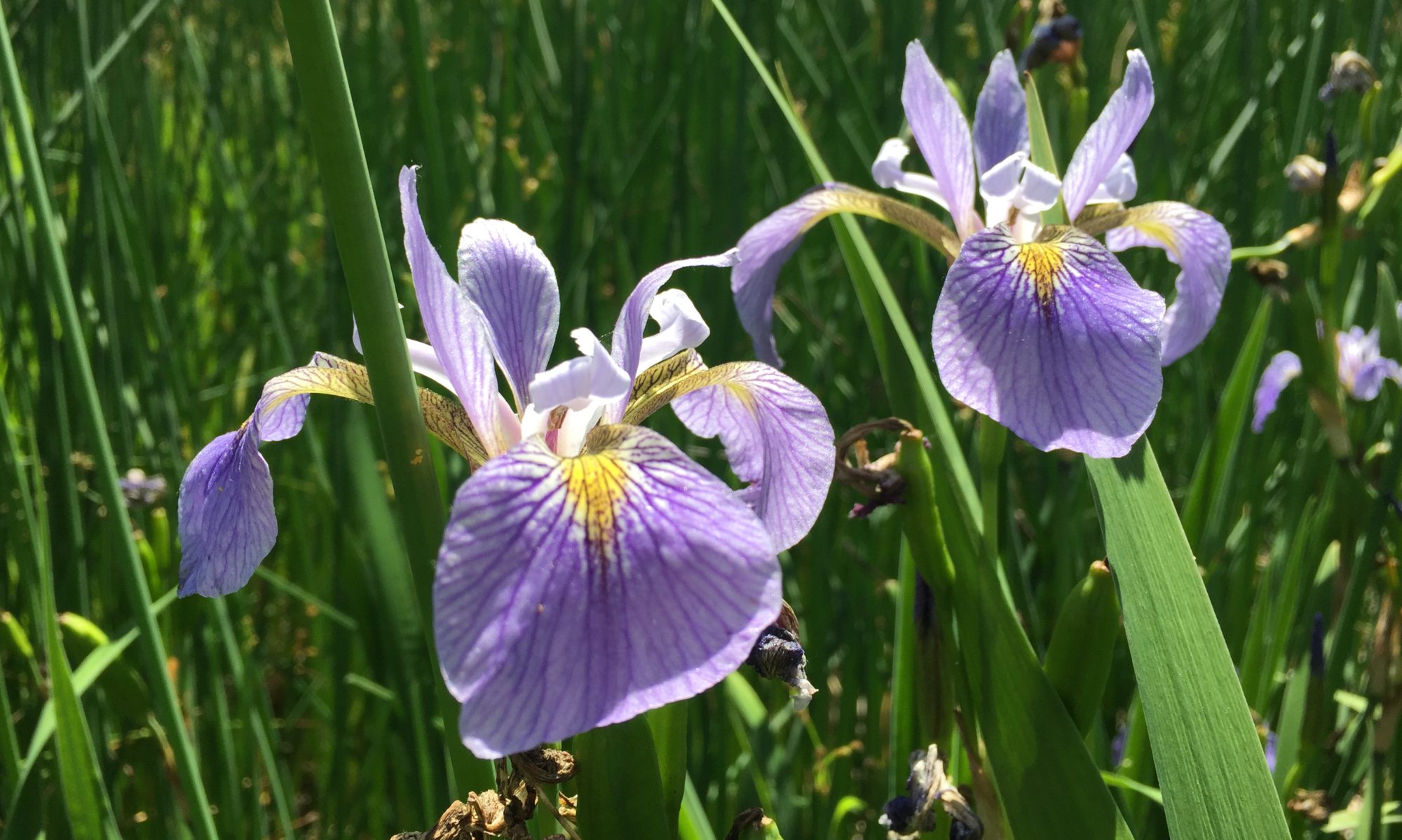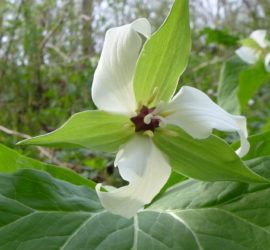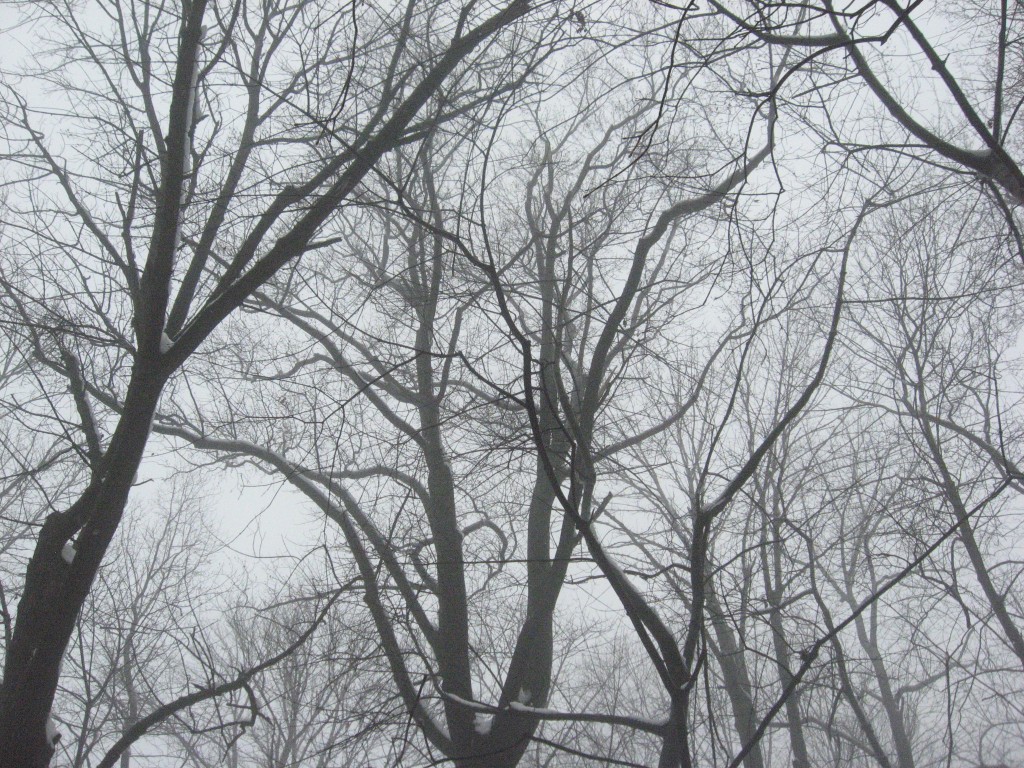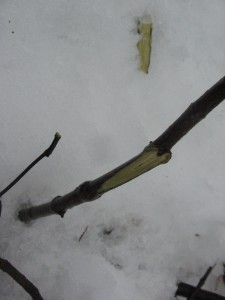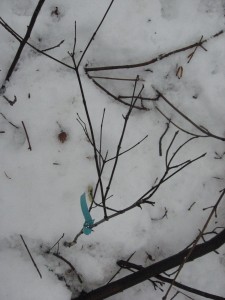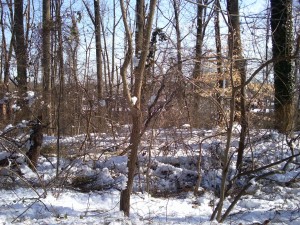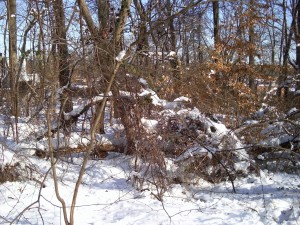SPECIMEN IMMEDIATELY CONTAINED. SURROUNDING AREA INVESTIGATED: SEVERAL MORE SPECIMENS Â DETECTED
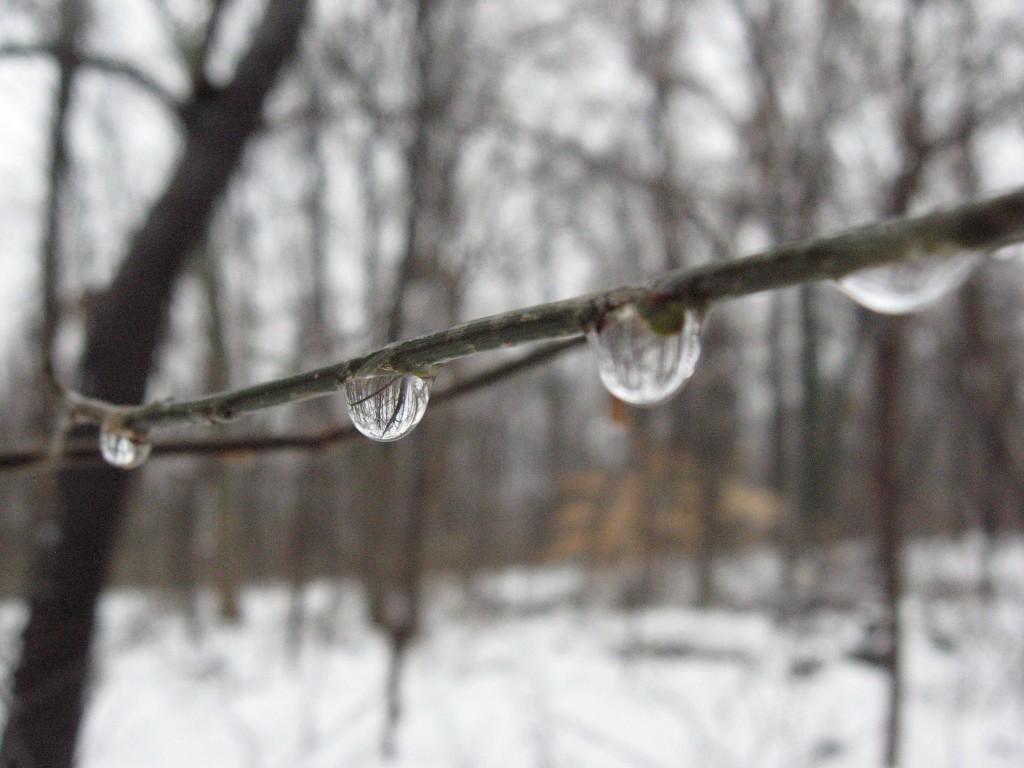
This widespread and problematic invasive (Berberis thunbergii) was found at 2:30 pm Saturday, in an area of Morris Park that had not been previously associated with this plant. Complicating the situation was the fact that there were still seed-bearing berries on the stem. Â At any moment these berries could have been released into the wild, further propagating the species and infesting forests in the region. Â Each berry was potentially a moment away from a hungry bird eating it and depositing the seeds in a new location where they could form an infestation, crowding out native understory plants, and threatening the very ecosystem that sustains the bird’s longterm survival.

Containment commenced immediately. Plastic bags were pressed into service, and all parts of the plants containing berries were enclosed and removed from the site. Parts of the specimen without  seeds were saved for further study, being that this plant is not a common invasive in this area of Morris Park .
An assessment of the immediate area was the logical next step, and sure enough, several other specimens of Japanese Barberry were found and  contained within the next hour.
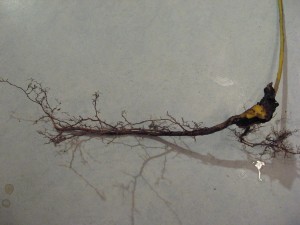
This was a difficult situation for Sean Solomon, while disturbed at these latest findings, was pleased by the manner and efficiency of the response. He was the one volunteer to discover the plant. Asked about his reactions, Mr Solomon said ” I’m not surprised about it, but then again I didn’t think it would be in this specific area. Thats the upsetting part. Â I’m just glad we got it. Â For now its being dealt with in a responsible manner…. There’s alot of woods in this area that don’t have Japanese Barberry infestations, and if we find it we have to deal with it.”
Mr Solomon’s childhood home in Massachusetts had Japanese Barberry infestations throughout its forested areas, so this finding was especially difficult for him. Â ” I never knew what it was before, except it was everywhere and it was unpleasant.”
Philadelphia’s Fairmount Park staff identified a specimen of Japanese Barberry on the Morris Park Road path, long since removed , as a problem invasive, and it made sense after that.  “Thats it!” Mr Solomon  said  ” I checked it out online, and looked it up in The Plants Of Pennsylvania, and it was true, this plant does not belong in our forests, it is a widespread pest.”
The Japanese Barberry was found during a routine management exercise of another widespread invasive shrub Burning Bush (Euonymous alatus) . What started out as an uneventful, rainy afternoon, controlling a known problematic invasive ended up with a startling but not altogether unexpected finding.  While not a widespread invasive in Morris Park, Japanese Barberry is considered a widespread invasive by the New Jersey Emerging Invasive Strike Team.  This organization has classified the priority of concern of this plant  as a lower priority than removing exotic species that have the potential of becoming widespread.
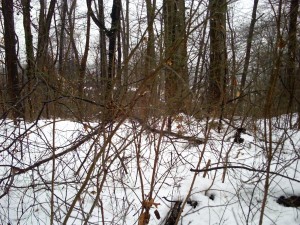
This is a theme that penetrates the field of environmental restoration, from Oregon to England as far as we know: Â When addressing environmental concerns, we must choose our battles, as resources permit; first we fight the battles we have the best chance of winning. Â The highest priority is to protect the most untouched and un-intruded natural areas. Â The intervention and restoration of infested and degraded areas follows, in order of our chances of success.

The Eunymous alatus has become a widespread invasive in our area of concern in Morris Park. Note the corky wings along the stems. Â We have been removing this understory bush for three years.
